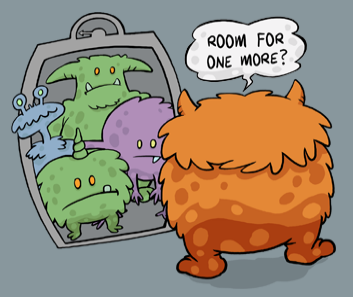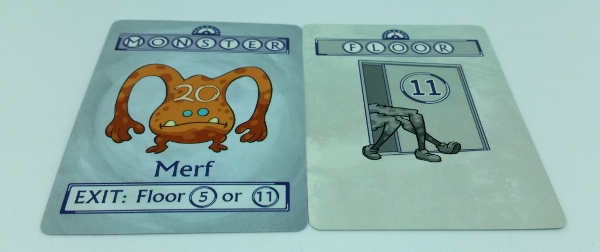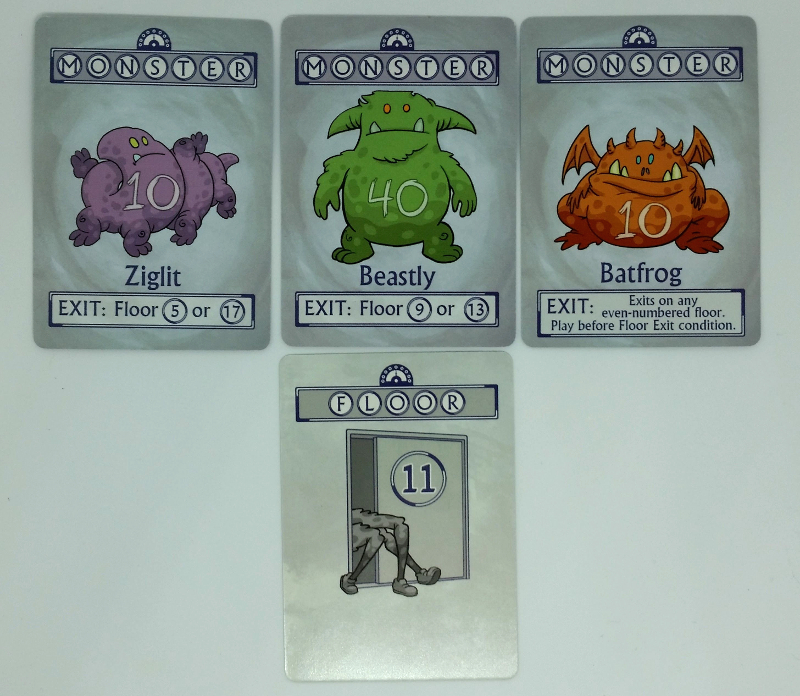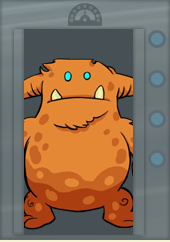On paper, the idea of creating a game that’s both interesting and educational seems blisteringly simple. All it has to do is incorporate teaching something substantive alongside an entertaining and fun experience.
Of course, on paper it’s easy to draw yourself on the moon too.
In truth, designing a game that has merit both as an educational tool and something players want to continually come back to is more difficult than it initially seems. If a design drifts too far one way, it’ll convey the information that you want but generally won’t feel as much of a game as a learning exercise masquerading as a game. On the other hand, if it drifts too far the other direction you could have an enjoyable game that doesn’t accurately teach the player much of anything from an academic perspective. The more complicated the game becomes, the harder this is to accomplish. This is why games like 1775, Freedom, and even Twilight Struggle are so notable: they can be just as useful in a scholastic setting as at the kitchen table.
Luckily, when it comes to simpler concepts aimed at younger audiences, this process gets a little easier, thereby giving you a few more options to choose from. Today we’re happily adding another such title to the mix with Monsters in the Elevator, a brief card game for 2-6 players all about honing basic math skills.
In this game, players are working together to help a building’s elevator rise to the top floor as monsters hop on and off at various floors. Using a mix of rudimentary math concepts and a playful but inviting concept, the game manages to be both educational and entertaining to without sacrificing one for the other, all while being accessible to players of all ages.
How easy is it to learn you say? Why about as easy as it is to count to 200.
Monsters in the Elevator consists of two decks: 20 Floor cards, signaling each round of the game, and a core deck containing a mix of monsters and Action cards. In this game, monsters each have values in increments from 10 to 50, depicting different-sized amusing and affable creatures trying to make it to their destinations. Because just like people, not all monsters are the same.
Showcasing both the game’s brevity and its low barrier to entry, the rules to Monsters in the Elevator breaks down into four simple steps, which are the same for each round. First, players flip over the next Floor card. The game begins on the first Floor – no parking garages here. Should you collectively make it to the 20th Floor card, everyone wins!
Well, everyone except for that poor Flerpy who forgot his coffee in the lobby and has to go back down for it. Poor Flerpy…
Next, some monsters exit the elevator. Being a working building and all, not everyone is trying to get to the observation deck at the top. Some want to do some shopping, maybe visit the salon, and plenty are probably just off to work. (We’re guessing. We didn’t want to hassle every monster getting in and out of the elevator.) When a monster leaves the elevator, they are discarded. A monster like this:
To determine which monsters leave the elevator, players look at the text on the Floor card and those of the monsters themselves. Every monster specifies one or more floors that they’re looking to get off at. This may consist of a specific floor, such as Floor 11 (where we’re told the game store is), or it may state a numerical condition, such as them wanting to get off on any floor that’s a multiple of 3. These latter cases may not make as much sense flavor-wise, but in exchange they inject minor multiplication concepts into the game, giving younger players an extra moment to figure out where their exits may be. Additionally, every even-numbered Floor card provides criteria for which monster(s) leave the elevator.
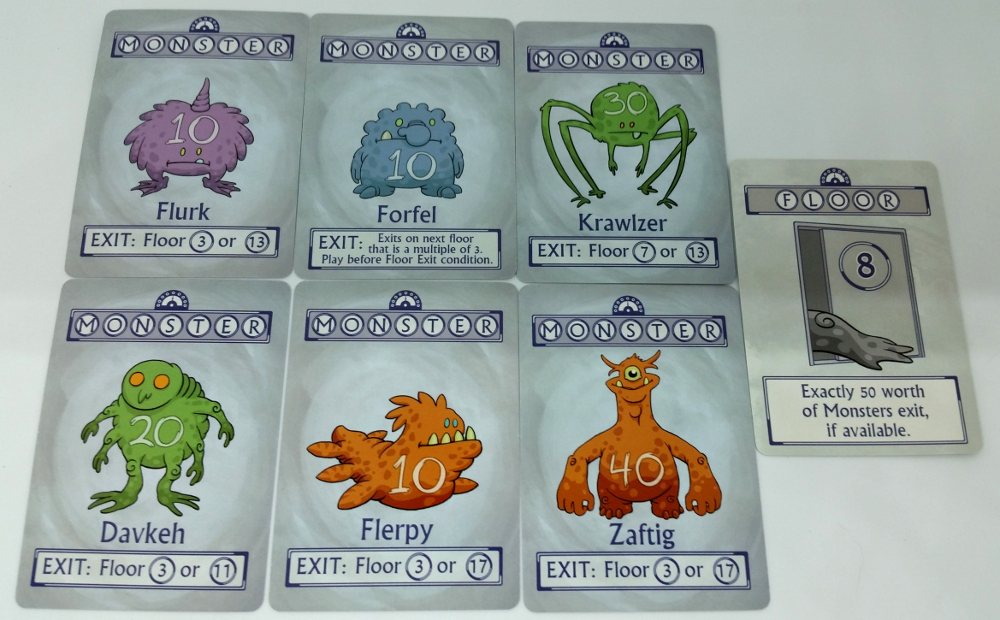
Upon reaching Floor 8, 50 worth of monsters are discarded, leaving another 70 still in the elevator.
Prototype Shown
Then, each player chooses a card from their hand to play for the round, and when ready, everyone simultaneously reveals their selection. At the beginning of the game each player has a hand of three cards. If the revealed card is a monster, it’s played to the board – the elevator. If it’s an Action card, however, its effects are resolved after adding new monsters and is then discarded. The effects vary, but they generally represent events that cause between one and all of the monsters to get off on the current floor. Players then draw a replacement card.
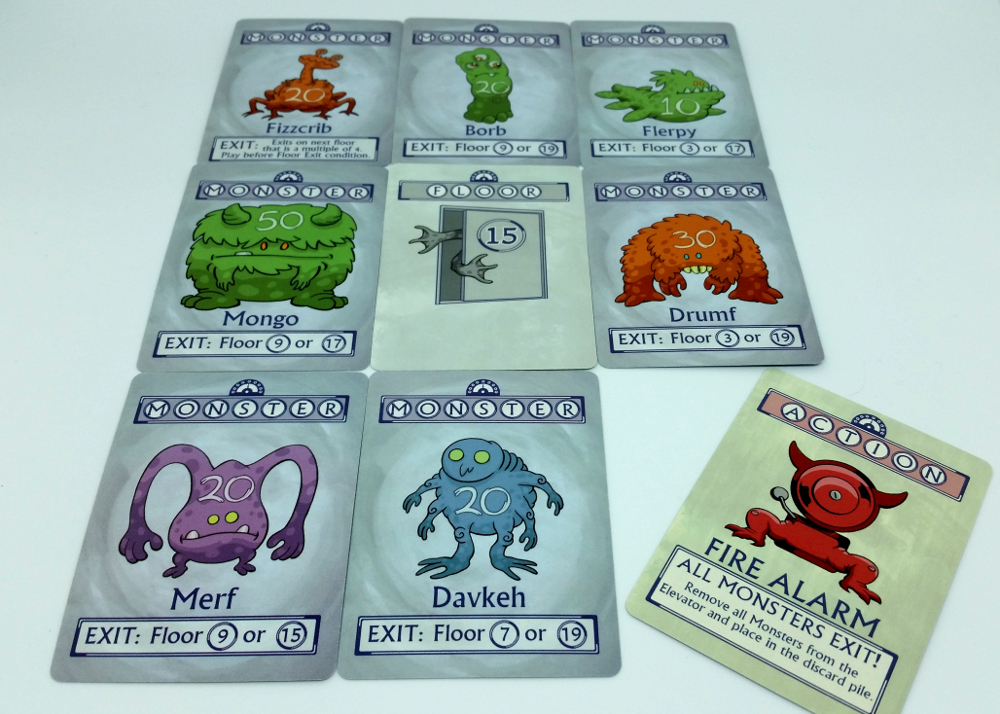
With 170 worth of monsters in the elevator, someone decided to pull the fire alarm just in time! All monsters are discarded.
Prototype Shown
The card selection process in Monsters in the Elevator is arguably one of its best attributes towards longevity, largely because it allows each person to make individual assessments about the condition of the elevator. Although the game is unequivocally a Co-Op by nature, and players are encouraged to talk loosely about their options, by not playing with open information, it provides two features towards its replayability. The first is that it adds a bit of unpredictability to the game. Do you play one of your bigger monsters and hope that one of your teammates provides a solution instead, or will everybody play it safe for the round? Do you even have a choice? This leads to light but amusing pressure point moments over when to play certain cards and what happens when the chosen cards are revealed. It’s possible, for instance, that everyone uses an Action card at the same time to empty the elevator. Of course, it’s also possible that no one does.
Secondly, by not having an open hand it allows players the ability to make their own final decisions over what they feel the best move is, which in turn helps quell the risk of an alpha gamer taking control of the elevator switchboard.
This is especially helpful making younger players feel more engaged with the game and that their choices have a direct impact on the game’s outcome. If they’re simply told which cards to play, the game can become rather rote in a hurry.
Finally, once everyone’s card for the round is resolved, you determine if the elevator’s passengers has caused it to crash. This is done by adding up the sum total of all monsters present. The elevator’s capacity in any playthrough is equal to 50 times the number of players. (e.g. in a four player game, the limit would be 200.) If the monsters’ total doesn’t exceed that limit, then the elevator lurches upwards with a happy Ding! to the next floor. If you go over the limit, though, then the elevator crashes and everyone loses. And no one wants to walk up 20 flights of stairs.
That’s it.
Like a real elevator, there’s not much to this game’s operation. Yet it does its job particularly well. Although predominantly aimed at children and families as its primary audience, Monsters in the Elevator rises above that aspiration to be a welcoming and lighthearted casual card game for creatures young and old. With easy to teach rules, an amusingly offbeat premise, and just the right mix of light decision-making alongside an inherent unpredictability over what the other players will do, this is one 20 minute Filler Game that pushes a lot of the right buttons. While it may not be complex enough to hold the vested interests of more enfranchised gamers, Monsters in the Elevator nevertheless succeeds at making a worthwhile game about learning to count basic numbers – and making that experience fun to boot. It’s educational, entertaining, and endearing, all stuffed into one little box. Which, when you get down to it, is all the more fitting.
If you’d like to take a ride with Monsters in the Elevator, you can press the call button right now over on its Indiegogo campaign. We hear the view is pretty nice from the top floor.
Photo Credits: Monsters in the Elevator cover and artwork by Yaya Play Games.

